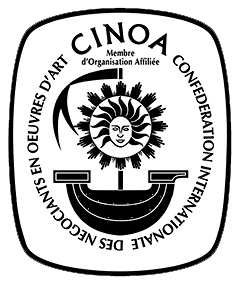Dutch ebony and tortoiseshell mirror
Global shipping available
- Origin
- The Netherlands
- Period
- 17th century
- Material
- Ebony, tortoiseshell, Ebonised pear wood
- Height
- 43 cm
- Depth
- 3 cm
- Diameter
- 33 cm
- Literature
I. Breebaart & G. van Gerven, ‘Pressed baleen and fan-shaped ripple mouldings by Herman Doomer’, Eleventh International Symposium on Wood and Furniture Conservation, Amsterdam 2013, p. 65, 66.
Questions about this object?
Please use one of the contact options below:
Description
The richly worked frame of this Dutch mirror is made of ebony, ebonised pearwood and tortoiseshell. The glued amber-coloured flaming tortoiseshell parts are trimmed with geometrically profiled rippled frames in two patterns: a straight rippled decoration and a zigzag decoration. These dark ebony rippled frames are typical of 17th century Dutch frames for both mirrors and paintings. They became popular in the first half of the 17th century, although the technique was probably invented somewhere else in Europe in the early 16th century. The hard ebony could not be worked with normal woodworking tools; techniques used in ivory carving were employed. The wood was scraped, not cut, creating the wavy ridges. As the light plays on the carved wood it creates a rich variety of light and dark.
At the back of the mirror there is a standard, so the mirror can be placed on a table or shelf. Considering this standard, the mirror has most probably been a shaving mirror.








